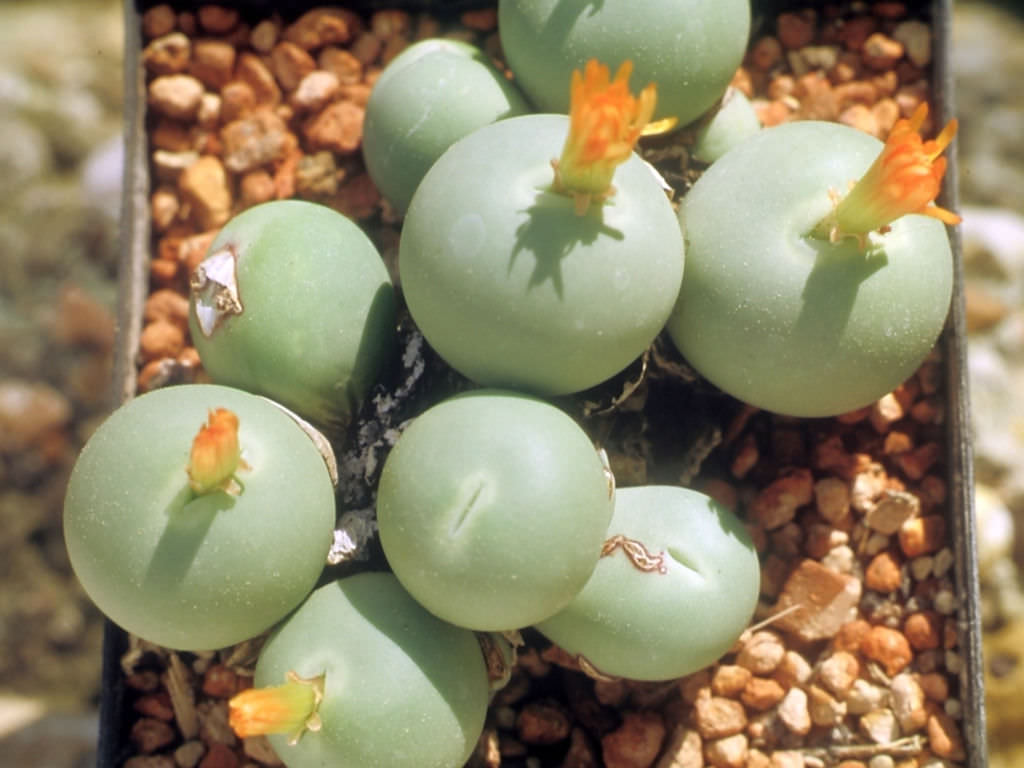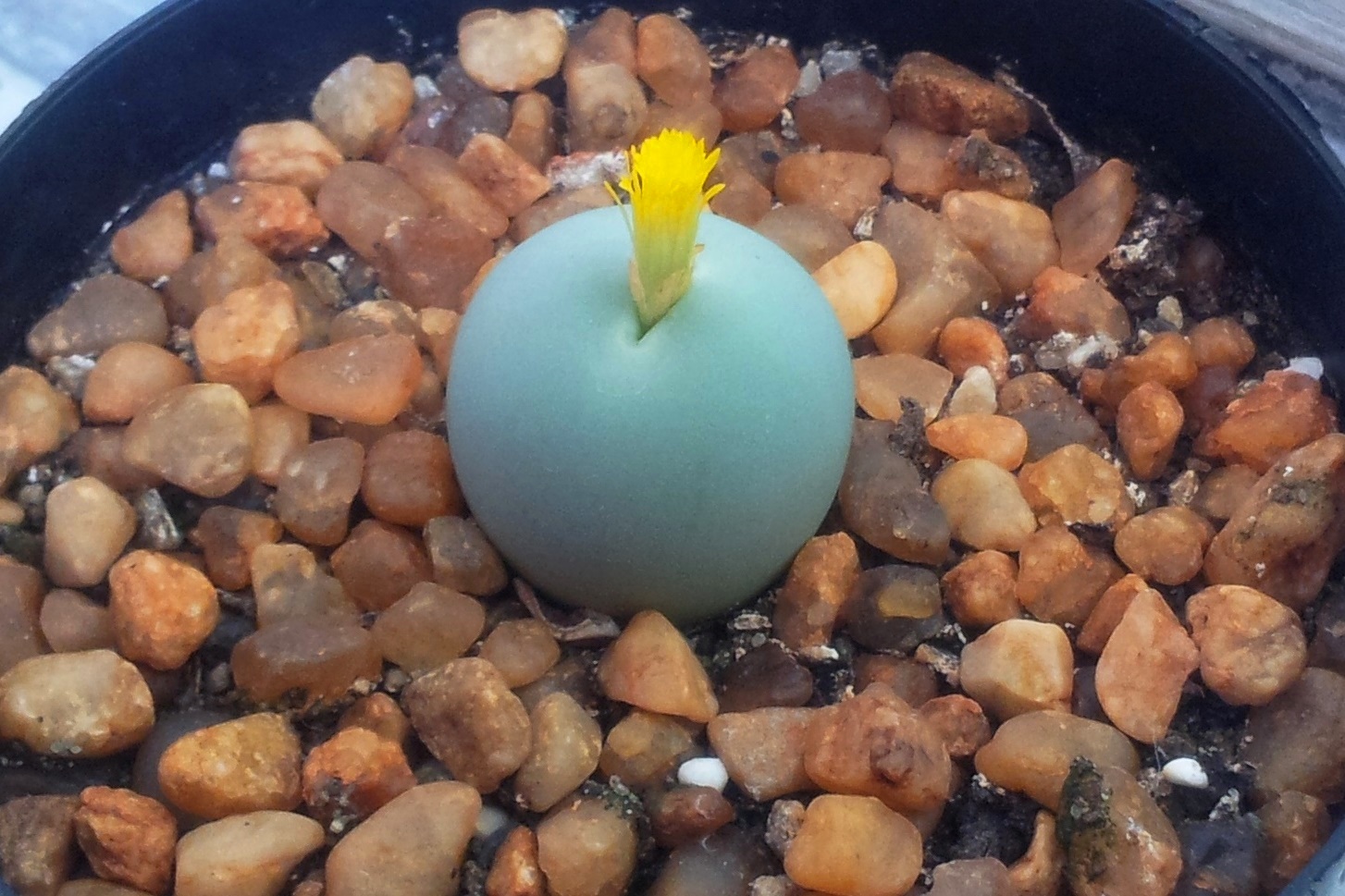Marble Buttons - 20 seeds




Marble Buttons - 20 seeds
Conophytum calculus is a small, but very tough, low growing, stemless succulent with individual rounded “leaves” (fused together into one body) that multiply with age and cluster together to form a dome-shaped cushion. The spherically-shaped leaf bodies are completely smooth and hairless, characteristically opaque (non-transparent and non-glossy) and have a chalky-green to pale yellowish green color. The leaf bodies are always without any spot or detail and up to 1.2 inches (3 cm) in diameter. New leaves are formed inside the existing ones and when, after a year, the leaf body starts to die, a new one emerges from inside.
1. Sterilize substrate (3+ minutes in microwave or 50 mins in oven- (350°F) and let it cool)
2. Mesembs (Lithops, Conophytums...) require a well draining soil, which means it dries out quickly. Soil should contain a lot of pumice, perlite or sand. Sand should consist of many sizes of particles, from dust to 1/8”. The basic soil mix is 1 soil mix to 3 pumice and sand. Remove any big chunks (peat) from the potting soil.
3. Planters should be about 1-1.5 inches deep. Fill a container with good draining soil. Leave 1/2 inches to the top free. Press the substrate, equally.
4. Disperse pebbles granulated up to 0.2 inches
5. You can sow 50 -100 seeds into one planter 3x3 inches. Mesemb seeds are very tiny.
6. Equally Water the substrate with water (boil and then let it cool) - place a piece of a napkin on top of the substrate and slowly pour the water over it.
7. Let the container soak up water for 5 minutes. Leave the container to drain out the water surplus.
8. Mix some fine sand to the bag with seeds, and sprinkle contents of the bag onto the substrate and pebbles. Do not cover with too much soil or the seeds may not germinate.
9. Put the whole container into a zip bag to keep humidity.
10. Avoid exposing to direct sunlight, but provide them light on some bright place, temperature should be about 77°F.
11. The germination process usually starts within 4-7 days but some seeds can germinate after month or two. Don't expect all the seed to germinate at the same time.
12. Start opening the container gradually so that the seedlings can get used to the new air conditions. Remove bag completely after a month.
13. Seedlings need some moisture, substrate shouldn’t be dry, but don’t overwater. and they need an ample amount of light – but not direct sunlight! you need to take care of them constantly next 3-5 months.
14. Repot them when you notice that seedlings are space-limited, which is usually in a year.
15. Buy only seeds from reputable sources like www.rareplant.me. That way you will avoid scams, fake or bad seeds, and you will always get fresh ones.
The old leaf becomes a thin, dry, and smooth, beige colored sheath, sometimes turning black, which persists on the plant. It flowers in autumn and has spicy, clove-scented, golden yellow to dark orange flowers which are nocturnal. They only open at night.
Conophytums love to grow in pots, as they are naturally adapted to growing in cramped spaces. The easiest and most popular method of propagation is by taking cuttings. These should be taken a few millimetres below the growing point, which is where the base of the body joins to the woody stem/sheaths.
A slightly acidic growing medium is best, and can be made up using equal parts of sieved, well-composted potting soil and coarse river sand. Bright morning light and some shade in the afternoon is ideal for the plants. Use warm water in fine sprays to moisten the plants from autumn to spring and be sure to leave them dry and shaded in their dormant period during the summer months.
Propagation via seed is slightly more effort but definitely rewarding. Seeds are ready to sow as soon as the capsules are dry. Use the same soil as for cuttings, but use a 2mm sieve to sift the soil and sterilise in the oven for an hour at 180 degrees Celsius. Sow the seeds thickly and cover with a layer of fine gravel, no deeper than 2mm. Let the pots soak in water from below and cover with plastic or glass. After a week, leave the covering slightly ajar to prevent algae growth. Most seeds will have germinated in ten days.
After two weeks, remove the covering and mist the seedlings daily and soak from below once a week. During this time they should not be allowed to dry out, only until their first summer comes around, a time at which they should be watered only every two weeks. Seedlings are better off left together for at least the first year after which they can be pricked out in clumps or as individuals and transplanted
